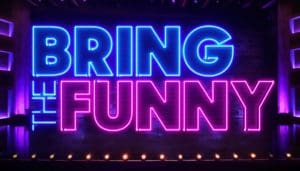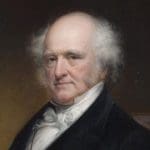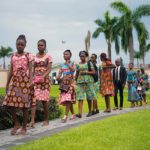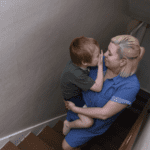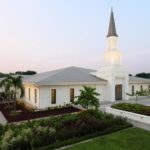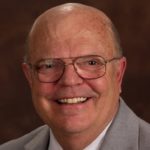We’re heading to the San Francisco airport in a rented Taurus for what seems like the twentieth time this year.
Mother, who is in her 90s now, has lived 36 years on Geary Street, just a few blocks from Union Square and the proud old Curran and Geary theaters, where San Franciscans have gone to see the latest Broadway musicals and straight plays since before I was born. Determined to live alone, Mom needs a lot of care these days, some of it on maddeningly short notice.
For my brother and me, growing up with music and arts in nearby Palo Alto, San Francisco used to be a weekend wonderland of jazz, opera, and Italian food. (Don’t forget baseball.) Now for both of us it’s an airline destination for quick, worrisome trips-some are planned, but more and more are impromptu, sparked by the unexpected ring of the phone. Today we’ve finished a week at Kaiser Hospital, having flown to our mother’s side for fairly frightening emergency heart surgery that fortunately seems to have turned out-yet again-okay.
To catch my brother’s favorite freeway onramp, we travel streets I don’t usually choose, and suddenly I notice we’re stopped for a light by the back dock of the Golden Gate Theater. In a flash I recall how the Golden Gate was the last San Francisco movie palace to run live-music shows as double bills with first-run movies. Once, when about twelve, I went to the Golden Gate all by myself. I think the movie was No Business Like Show Business, with Ethel Merman, Dan Dailey, Johnnie Ray, Marilyn Monroe and Donald O’Connor, but it was the rest of the billing that excited me: the Lionel Hampton band, live on stage. That was my first in-person encounter with both Hamp and his theme song, “Flying Home,” which, by that point in the 50s sounded pretty screaming-wild to my young Glenn-Miller-trained ears.
Today the Golden Gate Theater is a grandly-refurbished Shorenstein property, and my BYU friend Tom Hart is one of those in charge of that property as well as the aforementioned Geary and Curran theaters, giving The Shorenstein Company a lock on prime theater real estate in pricey San Francisco. As the light is about to turn, I take in the scene at the back dock: an eighteen-wheeler is double parked, and a show is loading in. Once as exciting for me as the circus coming to town, I now take the back dock of a theater more in stride after several decades of association with touring shows. We start across Market Street with the traffic and I catch a glimpse of the marquee. They’re installing Some Like It Hot, the musical adaptation of the movie with headliner Tony Curtis still aboard. San Francisco would be an early and the longest stop of the national tour.
 On many of these San Francisco trips, Tom and Cherlyn Hart have invited us to shows at the Shorenstein theaters, but we’ve always demurred, limiting our brief visits to care giving.
On many of these San Francisco trips, Tom and Cherlyn Hart have invited us to shows at the Shorenstein theaters, but we’ve always demurred, limiting our brief visits to care giving.
Once Rick has the Taurus up onto the Bayshore Freeway, purring toward the airport, I escape into daydreams from the past: riding the commuter train from Palo Alto to San Francisco to see those great Broadway shows that held so much fascination: I saw Kiss Me Kate, The Pajama Game, Kismet, etc., and a few years later, with college friends, the first run of West Side Story and The Sound of Music.
Though I didn’t realize it at the time, I already had embryonic production ears: I kept wondering if there weren’t some way to make the vocals intelligible over the excitement of the screaming trumpets. Especially West Side Story had pushed the envelope, keeping the orchestra’s brass and saxes pretty intense over many of the vocals, but also opening up the sound of the drums. If you didn’t know the material in advance, it was hard to understand the lyrics.
I look up and see the green freeway signs for Silver Avenue, then Alemany Boulevard. There’s still some time before the airport, but Rick and I are all talked out. I reach into my black briefcase for some catch-up reading, and the first thing out is ProSound News, a big Billboard-Magazine-sized journal for the audio industry. The headline fits right into my reverie: the cover article is talking about audio innovations in this year’s Broadway musicals, bringing recording studio techniques into the musical theater domain. But the freeway lulls me and I put the magazine aside and slip back into pleasant daydreams.
Maisa (my wife) and the kids had been visiting in Finland, and I drove from Utah to San Francisco to pick them up at the airport. It was August, 1978. I pulled in late in the morning, ran some errands for Mom, and then on an impulse bought a single ticket to the Geary for that day’s matinee of Annie, which by then had already been playing a year at the Alvin Theater in New York.
Annie, which was based on the familiar Little Orphan Annie comic strip story line, had turned out to be a bigger event than anyone thought it would be, and it hit me like a ton of bricks. Not the story, except maybe that it was such a feel-good, positive tale coming at the end of the intense rock n roll 70s. (Andrea McArdle, the young actress who first played Annie, recalls how Paul McCartney brought Linda and their daughters to see the show in New York, and the party came backstage to meet the young star. McCartney was so taken with the show, she says, “that he came back later and bought the publishing rights.”)
And Annie had an unexpected emotional effect on me, too, sitting in my single seat on the seventh row. I had to ask myself, what’s the deal here? Why in the world am I crying?
What it was-I’m almost embarrassed to tell you-was the sound mix. I was finally sitting in the Geary Theater like I had done so many times before, but this time principles the industry had learned about recorded sound were being harnessed to shape and focus the sound of live theater. Finally this was the mix I had dreamed about as a kid.
When you think about it, though, 1978 was kind of a logical year. In the studios 16-track multi-channel recording had been around for awhile, and 24-track machines were the latest thing. We had the Yamaha DX-7 synthesizer, as well as the first huge Moog and Arp analog synthesizers. We had EMT plate reverbs and some great microphone technology by then, including the first generation of wireless microphones for the stage, and Annie, at least for me, was the first time theater sound had come together with magical perfection.
Now its twenty-five years later and again Broadway is abuzz with sonic innovation. But this time we can report that Mormon theater and Utah theater are in step with the technology.
In the spirit of the original KSL mission statement, crafted in the early days of radio, and which read something like, “We will always stay at the forefront of technology,” the recent Church production, Light of the World, which played in the Conference Center during the Olympics, was created to be executed in ProTools, or all from a computer screen. An ambitious production with lavish music and abundant special effects in lighting and staging, Light of the World was controlled by the fingertips of Bart Schaerrer, the ProTools engineer.
Another example of quality sound is Joe Anderson handling the contemporary stylings of Shadow Mountain Records group Jericho Road as they tour. Joe manages to get the requisite thump on the bottom while delivering the rest of the sound picture with admirable clarity. Shadow Mountain Records, of course, is an imprint of the Church’s Deseret Book Company.
But perhaps the Utah production most in step with what ProSound News is reporting about Broadway was a recent private-enterprise production of Evita, which opened at the Scera outdoor theater in Orem and resurfaced later for a run at the Capitol Theater in Salt Lake City. Music director J Bateman, who mixed sound all over the globe for the BYU Young Ambassadors’ touring shows, now makes his living as a studio-based music producer. Combining his live theater experience with his considerable studio chops, J successfully updated the sound of Evita by melding synthesized midi tracks with a live band, using a computer as the heart of it all. Bateman himself stood on the front line and played three instruments live. The result was to take a capable ten-piece band and make it sound larger than life.
Inside the music industry today it is being said that this blending of the real and the synthetic, the use of the big studio orchestra with both the traditional rhythm section and also with computer-based techno midi tracks will be the hallmark of the first decade of the new millennium.
One obvious and surprising example of this synthesis can be found in Nashville, where BYU grad Dan Truman plays keyboards for Diamond Rio, the country band that still manages to create hit after number-one hit. Now keep in mind that Diamond Rio is the group that refused to let studio players make their albums: they play their own tracks for all their recordings, under the guidance of producer Mike Clute. But for their current album, Completely, which so far has yielded the number-one song, “Beautiful Mess,” there are several musical episodes which are downright symphonic in nature, and a couple of others you’d swear were techno. Weird? Maybe, but also perhaps just a Nashville manifestation of the musical style of the decade we’re in.
We turn the Taurus in at Hertz, Rick heads for New York, and I fly home to Utah. Daydreams of Annie seem far behind. But several months later I’m back on the road, touring with BYU and the Young Ambassadors’ Broadway Rhythm show. In Oakland, Maisa and I have a moment of reunion with old friends Tom and Cherlyn Hart, sponsors of the Oakland show. After a while their daughter Daria (now Gulbransen, and a former Young Ambassador) walks in and joins us while we’re setting up in the theater of the Oakland Multi-Stake Center, near the Temple.
 It’s a chance for me to check my memories of Tom’s employer, the Shorenstein Company. Daria says, “But, Ron, did you realize Shorenstein is related to the Nederlander Organization?” her father nods. “Remember when Daria went to New York? She was doing auditions and shows, and during the day she worked at Nederlander?” No, actually I had no idea. And that ties the San Francisco theater properties that Tom helps manage to one of the largest theatrical ventures of all time. (In case you doubt this, type in “Nederlander” and do a Google or similar search on the Internet. The list of Nederlander productions on Broadway is endless.)
It’s a chance for me to check my memories of Tom’s employer, the Shorenstein Company. Daria says, “But, Ron, did you realize Shorenstein is related to the Nederlander Organization?” her father nods. “Remember when Daria went to New York? She was doing auditions and shows, and during the day she worked at Nederlander?” No, actually I had no idea. And that ties the San Francisco theater properties that Tom helps manage to one of the largest theatrical ventures of all time. (In case you doubt this, type in “Nederlander” and do a Google or similar search on the Internet. The list of Nederlander productions on Broadway is endless.)
We have now moved my mother to Utah, where we can care for her at closer range. But she participates in our Young Ambassadors tour by spending her day on the phone to California, and soon we’re saying hello to an assortment of Bay Area cousins we almost never see, and we’re shaking hands with her former San Francisco Bay Ward bishop, Pierre Bize, and across the room we’re noticing a group of Mom’s Bay Ward friends who find each other and have a reunion of their own, thanks to Mother’s enthusiastic promoting. And in all this swirl of professional and personal greetings and memories, I find myself grateful for this chance to be involved-at least a portion of my time-with musical theater, and in a manner that reinforces the values I care so much about.
And I’m grateful, too, to be working with equipment and colleagues that give me a new chance every night to get that near-perfect sound mix-the mix I could only dream about as a kid in the balcony of the Geary Theater, struggling to understand the words.
An associate director of the BYU Young Ambassadors, Mr. Simpson creates the music mix of the show on the road.





